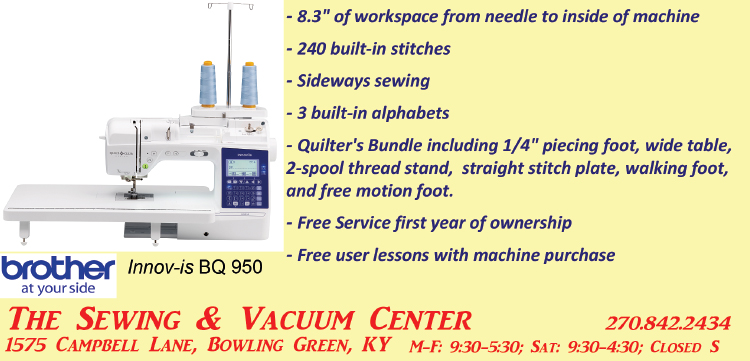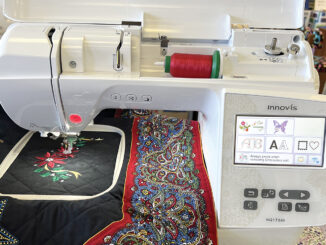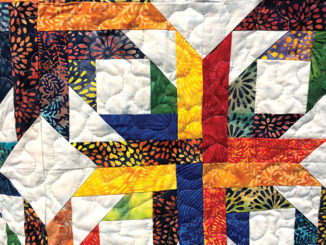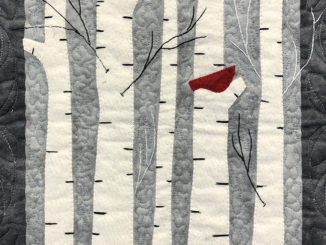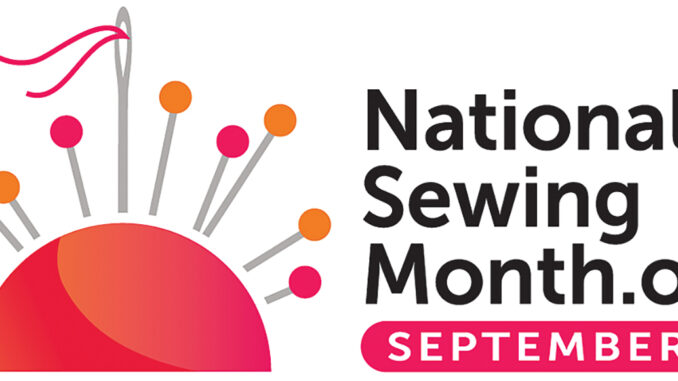
On September 21, 1982, President Ronald Reagan declared September as National Sewing Month (Proclamation #4976) “in recognition of the importance of home sewing to our nation.” Sewing skills have long been a part of our culture and have provided needed items for our lives as well as providing a relaxing, therapeutic activity for many of us.
At one time, most homes had a sewing machine, used mainly for clothing construction/mending and home decorations. Today, most sewers are quilters, crafters and embroiderers. The machines of today range from basic machines with a few stitches to combination embroidery/sewing machines that can scan and stitch sophisticated designs. These are very different from the “Singer” treadle machine that our great-grandmothers used!
The theme for this year’s National Sewing Month is “Traditional Sewing Techniques – New Sewing Traditions.” For many of us, this past year has brought a renewed interest in using our sewing machines, whether to make masks to help our families and local communities, or to finish up some of those projects lingering in the closets and sewing rooms.
Sewing has certainly changed a lot over the past 50 years. Just visit a sewing machine dealer and see the advances that sewing machines have made! Most have a variety of stitches, needle threaders, automatic buttonholes, etc. Changes have also been made in the notions and materials used for stitching. Even the techniques that I learned early in sewing have evolved due to new notions and fabric developments.
Cutting tools have changed over the years. When I started sewing, a pair of good dressmaker shears would handle just about any fabric cutting, including quilt pieces. My parents gifted me with a good pair of shears when I was in high school. I am still using those today, although they now qualify as an antique! The one major change in cutting notions was the introduction of the rotary cutter to the consumer market in 1979 by Olfa. The cutter was first used for garment making but quilters quickly realized the ease and accuracy of use and it is now the major cutting notion used in quilting. I imagine rotary cutters will be passed along to new generations, just as sewing shears have been.
Seam finishing is another area that has changed. Traditionally, seams were bound or pinked (using pinking shears to achieve the “toothed edge”) to prevent the fabric from raveling. The zigzag stitch on machines, introduced in the late 1940’s and early 1950’s, made finishing seams much easier and much less likely to ravel as the garment was worn and washed. Home sergers, introduced in the 1970’s, produced an even better, even finish to seams, similar to finished seams on purchased garments. The type of fabric can also dictate seam finish. Most knits do not require seam finishes as they don’t ravel like woven fabrics.
The types of sewing that people do today have also changed. Garment sewing is not as popular as it once was. Sewing today usually falls into one of several categories: quilting, crafting, home dec and machine embroidery. Machine embroidery continues to be popular today and really doesn’t require any sewing knowledge. We have many customers who have never sewn but enjoy adding embellishments and personalization to backpacks, hats, onesies, towels, robes, vests, etc. These customers also share that their “little ones” like to help with embroidery by choosing designs, threads and pushing the machine buttons! This can lead to interest in other types of sewing.
Even though sewing techniques may change, those of us who now engage with it generally do so for the love of creating. Over the years, I have been able to pass along a bit of myself through gifting a new baby with a quilt, a new bride with a wedding hankie, or a newlywed couple with an autograph quilt. I’ve also passed along quilts to family and friends and others in need of a “quilty hug.” Sewing techniques and projects may change but the heart that goes into the making of an item will ensure that the sewing tradition will continue for generations to come.
-submitted by The Sewing and Vacuum Center

